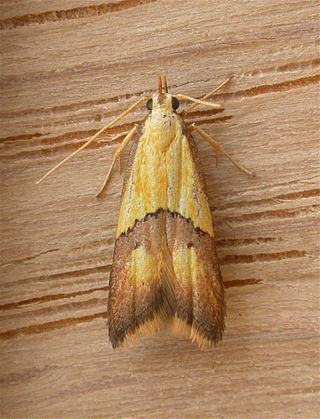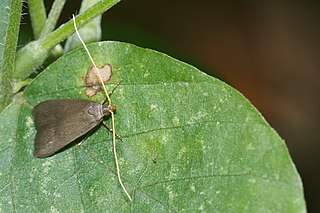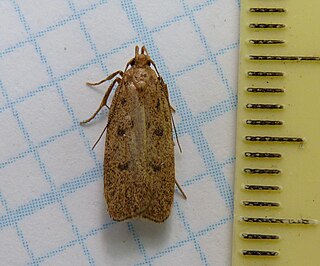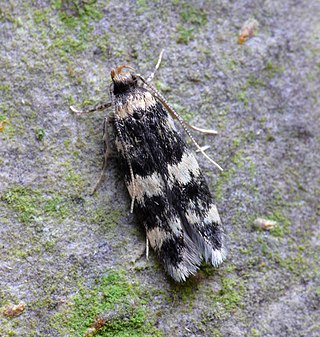
Gelechioidea is the superfamily of moths that contains the case-bearers, twirler moths, and relatives, also simply called curved-horn moths or gelechioid moths. It is a large and poorly understood '"micromoth" superfamily, constituting one of the basal lineages of the Ditrysia.

The Lecithoceridae, or long-horned moths, are a family of small moths described by Simon Le Marchand in 1947. Although lecithocerids are found throughout the world, the great majority are found in the Indomalayan realm and the southern part of the Palaearctic realm.

Scythrididae is a family of small moths in the superfamily Gelechioidea. The family is sometimes included in the Xyloryctidae as a subfamily Scythridinae, but the Xyloryctidae themselves have sometimes been included in the Oecophoridae as subfamily. Scythrididae adults are smallish to mid-sized moths, which when at rest appear teardrop-shaped.

The Lecithocerinae are a subfamily of small moths in the family Lecithoceridae. They are found worldwide, but most species occur in South Asia. The subfamily is characterized by the male genitalia with a bridge-like structure connecting the tegumen and the valva, and the uncus almost always is vestigial with two lobes at the dorsal base, only exceptionally united into a broad plate, but never as a thorn or spine.

Infurcitinea is a genus of the fungus moth family, Tineidae. Therein, it belongs to the Meessiinae, one of the larger fungus moth subfamilies.

The Symmocinae are a subfamily of moths in the superfamily Gelechioidea. These small moths are found mainly in the Palearctic and Africa.

Anacampsinae is a subfamily of moths in the family Gelechiidae.

Autostichidae is a family of moths in the moth superfamily Gelechioidea.
Charadraula is a moth genus in the family Autostichidae.
Turatia is a moth genus in the family Autostichidae.
The Torodorinae are a subfamily of small moths in the family Lecithoceridae.
Heringita amseli is a moth in the family Autostichidae. It was described by László Anthony Gozmány in 1954. It is found in Bahrain, Saudi Arabia, Afghanistan and Iran.
Turatia argillacea is a moth in the family Autostichidae. It was described by László Anthony Gozmány in 2000. It is found in Tanzania and Yemen.
Turatia iranica is a moth in the family Autostichidae. It was described by László Anthony Gozmány in 2000. It is found in Oman, the United Arab Emirates and Iran.
Turatia scutigera is a moth in the family Autostichidae. It was described by László Anthony Gozmány in 2000. It is found in Tunisia.
Turatia striatula is a moth in the family Autostichidae. It was described by László Anthony Gozmány in 2000. It is found in Saudi Arabia and Yemen.
Turatia tenebrata is a moth in the family Autostichidae. It was described by László Anthony Gozmány in 2000. It is found in Morocco.
Turatia turpicula is a moth in the family Autostichidae. It was described by László Anthony Gozmány in 2000. It is found in Namibia.
Turatia serratina is a moth in the family Autostichidae. It was described by László Anthony Gozmány in 1967. It is found in Algeria.







